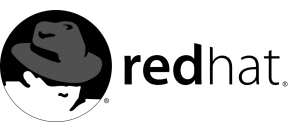
Chapter 3.
Boot Process, Init, and Shutdown
An important and powerful aspect of Red Hat Linux is the open method it uses for starting and stop
ping the operating system. During boot time, Red Hat Linux loads programs in a specific and config
urable order. Once booted, you are free to change the configuration files controlling the boot process
as well as the configuration files for the programs started at boot time. Similarly, system shutdown
gracefully terminates processes in an organized and configurable way, although customization of this
process is rarely required.
Understanding how the boot and shutdown processes work will not only allow you to easily customize
Red Hat Linux to your needs, but will also make it easier to troubleshoot problems related to starting
or shutting down your system.
3.1. The Boot Process
Below are the basic stages of the boot process for an x86 system:
1. The system BIOS checks the system and launches the first stage boot loader on the MBR of the
primary hard disk.
2. The first stage boot loader loads itself into memory and launches the second stage boot loader
from the
/boot/
partition.
3. The kernel is loaded into memory, which in turn loads any necessary modules and mounts the
root partition read only.
4. The kernel hands control of the boot process to the
/sbin/init
program.
5. The
/sbin/init
program loads all services and user space tools, and mounts all partitions
listed in
/etc/fstab
.
6. The user is presented with a login prompt for the freshly booted Linux system.
Because configuration of the boot process is more common than the customization of the shutdown
process, the remainder of this chapter will discuss in detail how the boot process works and how it
can be customized to suite your needs.
3.2. A Detailed Look at the Boot Process
The very beginning of the boot process varies depending the platform on which you are booting Red
Hat Linux. However, once the kernel is found and loaded by the system, the default boot process is
identical across all architectures. In the example outlined below, the system will be an x86 computer.
3.2.1. The BIOS
When an x86 computer is booted, the processor looks at the end of system memory for the Basic
Input/Output System or BIOS program and runs it. The BIOS controls not only the first step of the
boot process, but also provides the lowest level interface to peripheral devices. For this reason it is
written into read only, permanent memory and is always available for use.
Other platforms use different programs to perform low level tasks roughly equivalent to those of the
BIOS on an x86 system. For instance, Itanium based computers use the Extensible Firmware Interface
(EFI) Shell, while Alpha systems use the SRM console.
footer
Our partners:
PHP: Hypertext Preprocessor Best Web Hosting
Java Web Hosting
Inexpensive Web Hosting
Jsp Web Hosting
Cheapest Web Hosting
Jsp Hosting
Cheap Hosting
Visionwebhosting.net Business web hosting division of Web
Design Plus. All rights reserved

